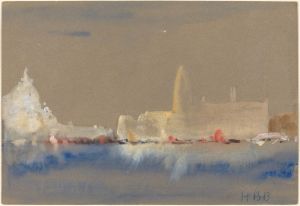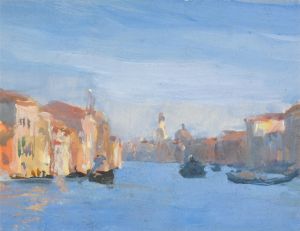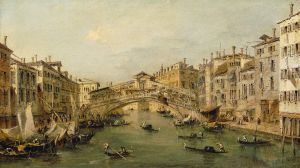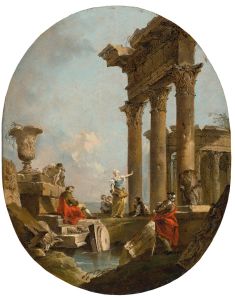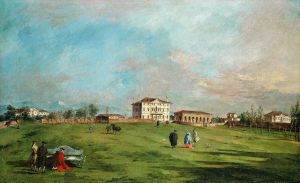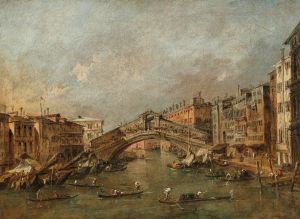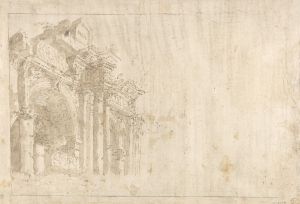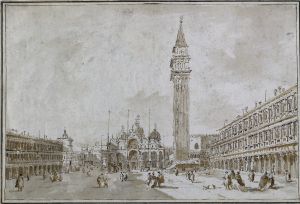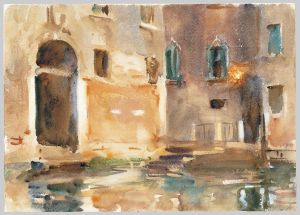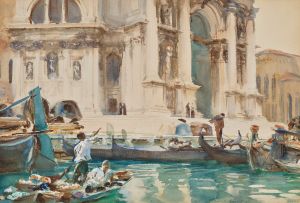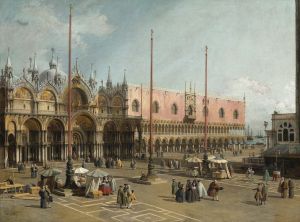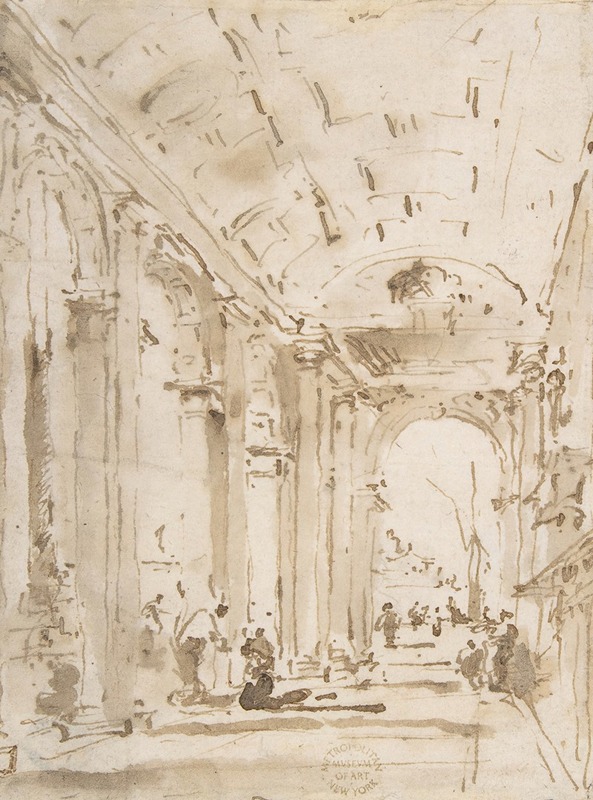
The Arcade of the Libreria, Looking Toward San Giorgio Maggiore
A hand-painted replica of Francesco Guardi’s masterpiece The Arcade of the Libreria, Looking Toward San Giorgio Maggiore, meticulously crafted by professional artists to capture the true essence of the original. Each piece is created with museum-quality canvas and rare mineral pigments, carefully painted by experienced artists with delicate brushstrokes and rich, layered colors to perfectly recreate the texture of the original artwork. Unlike machine-printed reproductions, this hand-painted version brings the painting to life, infused with the artist’s emotions and skill in every stroke. Whether for personal collection or home decoration, it instantly elevates the artistic atmosphere of any space.
Francesco Guardi, an eminent Venetian painter of the 18th century, is celebrated for his captivating vedute, or cityscapes, which vividly capture the essence of Venice during his time. One of his notable works is "The Arcade of the Libreria, Looking Toward San Giorgio Maggiore." This painting exemplifies Guardi's mastery in depicting the interplay of light and architecture, as well as his ability to convey the bustling life of Venice.
"The Arcade of the Libreria, Looking Toward San Giorgio Maggiore" is a quintessential example of Guardi's later style, characterized by a more free and expressive brushwork compared to the precise and detailed approach of his earlier years. This painting is part of a series of works that focus on the architectural grandeur and the vibrant atmosphere of Venice, capturing the city's unique charm and its relationship with the surrounding water.
The painting portrays the arcade of the Libreria, a prominent architectural feature located in the Piazzetta di San Marco, adjacent to the famous Piazza San Marco. The Libreria, or Library, known as the Biblioteca Marciana, is a Renaissance building designed by the architect Jacopo Sansovino. It is one of the most important buildings in Venice, housing a vast collection of classical manuscripts and serving as a symbol of the city's rich cultural heritage.
In the composition, Guardi directs the viewer's gaze through the arcade's arches, creating a visual pathway that leads toward the island of San Giorgio Maggiore, with its iconic church designed by Andrea Palladio. The church's distinctive façade and bell tower are visible in the distance, providing a striking focal point that balances the intricate details of the foreground architecture.
Guardi's use of light and shadow in this painting is particularly noteworthy. The play of sunlight filtering through the arches creates a dynamic pattern on the ground, enhancing the sense of depth and perspective. This technique not only highlights the architectural features but also animates the scene with a lively rhythm, reflecting the ever-changing atmosphere of Venice.
The painting also captures the daily life of Venetians, with figures depicted in various activities, such as strolling, conversing, and engaging in commerce. These human elements add a narrative dimension to the work, illustrating the social fabric of the city and its vibrant public spaces.
Francesco Guardi's work, including "The Arcade of the Libreria, Looking Toward San Giorgio Maggiore," is often associated with the later phase of the Venetian vedutisti tradition, following in the footsteps of Canaletto, another renowned Venetian painter. While Canaletto's works are known for their meticulous detail and clarity, Guardi's paintings are celebrated for their atmospheric qualities and expressive brushwork, which convey a sense of movement and vitality.
Today, Guardi's paintings are highly regarded for their artistic merit and historical significance, offering a window into the past and preserving the legacy of Venice's architectural and cultural splendor. "The Arcade of the Libreria, Looking Toward San Giorgio Maggiore" remains a testament to Guardi's skill in capturing the spirit of Venice, making it an enduring piece of art that continues to captivate audiences worldwide.






